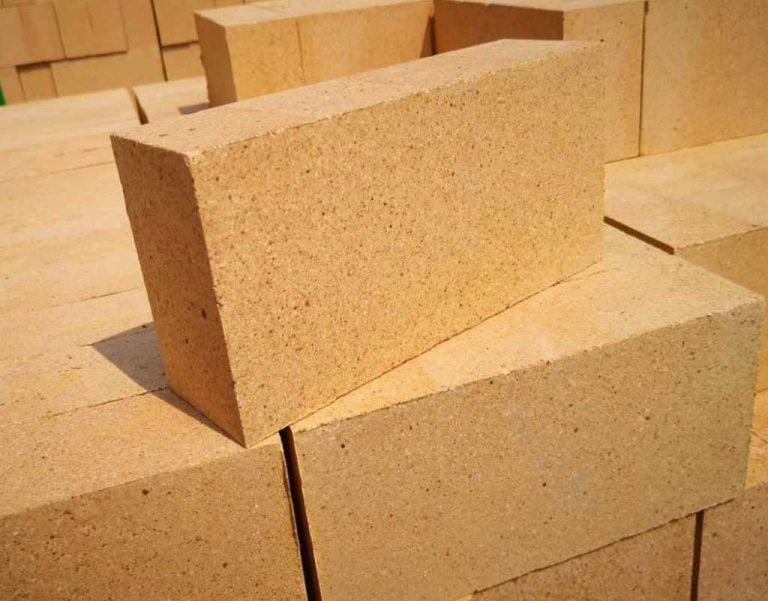?What is firebrick
Industrial refractory brick is a type of brick that has a very high resistance to heat. This type of brick is made of special materials that are easily inflammable when exposed to high temperatures. The main feature of industrial firebrick is the ability to withstand very high temperatures and prevent fire
Until the 1960s, what was used to cover the furnaces was carbon and refractory soil; But nowadays these materials have been replaced by refractory bricks. Firebrick is a ceramic piece that is usually used in furnaces, pans, industrial insulation or fireplaces. These bricks with a very dense and delicate molecular structure are made at temperatures above 1500 degrees Celsius and have amazing thermal resistance
Features of refractory industrial bricks
The main feature of industrial bricks, which is also known as fire bricks, is to withstand very high temperatures without breaking or melting (of course, it should be noted that before using bricks in your furnaces, read the basic information and specifications of each one and Choose the best one for your oven and your temperature – oven hell.); Also, another characteristic of this type of brick is having low thermal conductivity, which is designed and implemented in order to provide security and higher efficiency
Working heat tolerance temperatures of refractory industrial bricks
Chamotte bricks, which are also considered as industrial bricks, have a melting temperature and work heat resistance equivalent to 1250 degrees Celsius, and alumina bricks can withstand different temperatures, which we have mentioned in the table below, but if we want to say that the heat tolerance of industrial alumina refractory bricks is equivalent to 1350 degrees Celsius to 1600 degrees Celsius
:Types of industrial refractory bricks
Silicon refractory brick
Silica refractory brick is one of the most common type of acid refractory. Due to their high refractoriness, these bricks are compatible with high-temperature working environments and have high mechanical strength up to temperatures almost close to their melting point, as well as the ability to resist dust, soot and acid slag. Another important property of silica bricks is high resistance to acid slag. Of course, it should be noted that silica bricks are weak in alkaline environments and in contact with game slags
Alkaline firebrick (magnesia)
Alkaline bricks are refractories based on magnesite (MgO). Alkaline refractories show good resistance against chemical corrosion, liquid or solid oxide, dust and soot at very high temperatures. Alkaline bricks are widely used in steel and glass industries. These products are mostly used in places such as glass furnaces, floor bricks and electric arc furnaces and sometimes as a back layer. Weakness against thermal shocks, thermal expansion and high thermal conductivity are important disadvantages of magnesite refractory bricks
Aluminum refractory brick
Alumina industrial firebricks are among those that use a lot of AL2O3 and are used at very high thermal temperatures. Aluminum refractory bricks have high resistance to peeling, impact, wear, etc.
Their refractoriness is very high and they have high resistance to corrosion in acid and neutral slags at high temperature. Thermal conductivity in aluminum bricks is high and resistance to thermal shock is good in them. Aluminum bricks show weakness in reductive environments containing carbon monoxide
Chamoti firebrick (aluminosilicate)
These bricks are the most widely used type of industrial refractory bricks whose main ingredient is alumina silicate refractory clay. Shamouti brick has low thermal conductivity and thermal expansion, which is one of the most popular bricks due to the cheapness and abundance of raw materials and the simplicity of the production method
Guide to buying refractory bricks
:Buyers need to pay attention to the following points in order to choose the best and most suitable firebrick in the market
The standard of water absorption in ordinary bricks is between 6 and 18 percent. Meanwhile, in this type of brick, the amount of water absorption should be less than 2%. The convexity and concavity of refractory brick should not be complex. Dimensional tolerance (smallest size and largest standard size) should be considered. Soluble salts should not be more than 6% in ordinary, but in fireproofing, this amount must be less than 1%. Refractory bricks should not have any cracks. They must have the necessary resistance against freezing and atmospheric conditions such as high humidity and high temperature. Under no circumstances should a crack be seen from a distance of 1 meter at an angle of 45 degrees
Important note
Firebrick is essential for all high temperature processes, such as the production of metals, cement, glass and ceramics. it is estimated. to produce a maximum of 28 million tons of refractory materials every year. Despite these significant amounts, due to the abundance of virgin raw materials with low cost and the low costs of disposing of mostly ineffective materials, the recycling of spent refractory materials receives little attention
Of course, the degree of refractoriness of each of the bricks depends on its raw materials, each of the available bricks can withstand a significant amount of heat. In order to fully familiarize yourself with firebricks and the characteristics of each of them. It is better to review published articles once
These preliminaries were settled, he didn’t care. to abandon the implementation of his plan. He demanded it. With the thought that the whole world is losing him by delay. See what wrong you are doing. Complaints to compensation, injustice to reparation, abuse to removal, and duties to discharge
Contact our collection for more information


